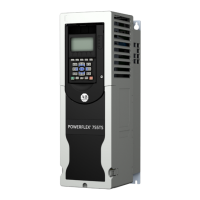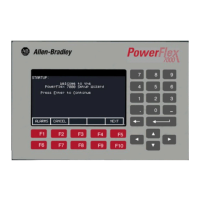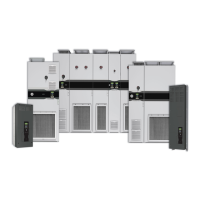DPI 2-85
Table 2.L Timing specifications contained in DPI and SCANport
The Minimum Update Time (MUT), is based on the message type only. A
standard command and Datalink command could be transmitted from the
same peripheral faster than the MUT and still be O.K. Two successive
Datalink commands or standard commands will still have to be separated by
the MUT, however.
DPI Host status messages only go out to peripherals once they log in and at least every
125ms (to all attached peripherals). Peripherals time out if >250ms. Actual time
dependent on number of peripherals attached. Minimum time goal of 5ms (may have
to be dependent on Port Baud Rate). DPI allows minimum 5ms status at 125k and
1ms status at 500k.
SCANport Host status messages only go out to peripherals once they log in. Peripherals time out
if >500ms. If Peripheral receives incorrect status message type, Peripheral generates
an error. Actual time dependent on number of peripherals attached. SCANport allows
minimum rate of 5ms.
DPI Host determines MUT based on number of attached peripherals. Range of values from
2 to 125ms. Minimum goal time of 5ms. DPI allows 2ms min at 500k and 5ms min at
125k.
SCANport No MUT.
DPI Peripheral command messages (including Datalinks) generated on change-of-state,
but not faster than Host MUT and at least every 250ms. Host will time out if >500ms.
SCANport Command messages produced as a result of Host status message. If no command
response to Host status within 3 status scan times, Host will time out on that
peripheral.
DPI Peer messages requests cannot be sent any faster than 2x of MUT.
SCANport No Peer message support
DPI Host must ping every port at least every 2 sec. Peripherals time out if >3 sec. Host will
wait maximum of 10ms (125k) or 5ms (500k) for peripheral response to ping.
Peripherals typical response time is 1ms. Peripherals only allow one pending explicit
message (i.e. ping response or peer request) at a time.
SCANport Host waits at least 10ms for response to ping. Host cannot send more than 2 event
messages (including ping) to a peripheral within 5ms. Peripherals typical response
time is 1ms.
DPI Response to an explicit request or fragment must occur within 1 sec or device will time
out (applies to Host or Peripheral). Time-out implies retry from beginning. Maximum
number of fragments per transaction is 16. Flash memory is exception with 22
fragments allowed.
SCANport Assume same 1 sec time-out. Maximum number of fragments is 16
DPI During Flash mode, host stops ping, but still supports status/command messages at a
1 – 5 sec rate. Drive will use 1 sec rate. Data transfer occurs via explicit message as
fast as possible (i.e. peripheral request, host response, peripheral request, etc.) but
only between two devices.
SCANport No Flash mode support
